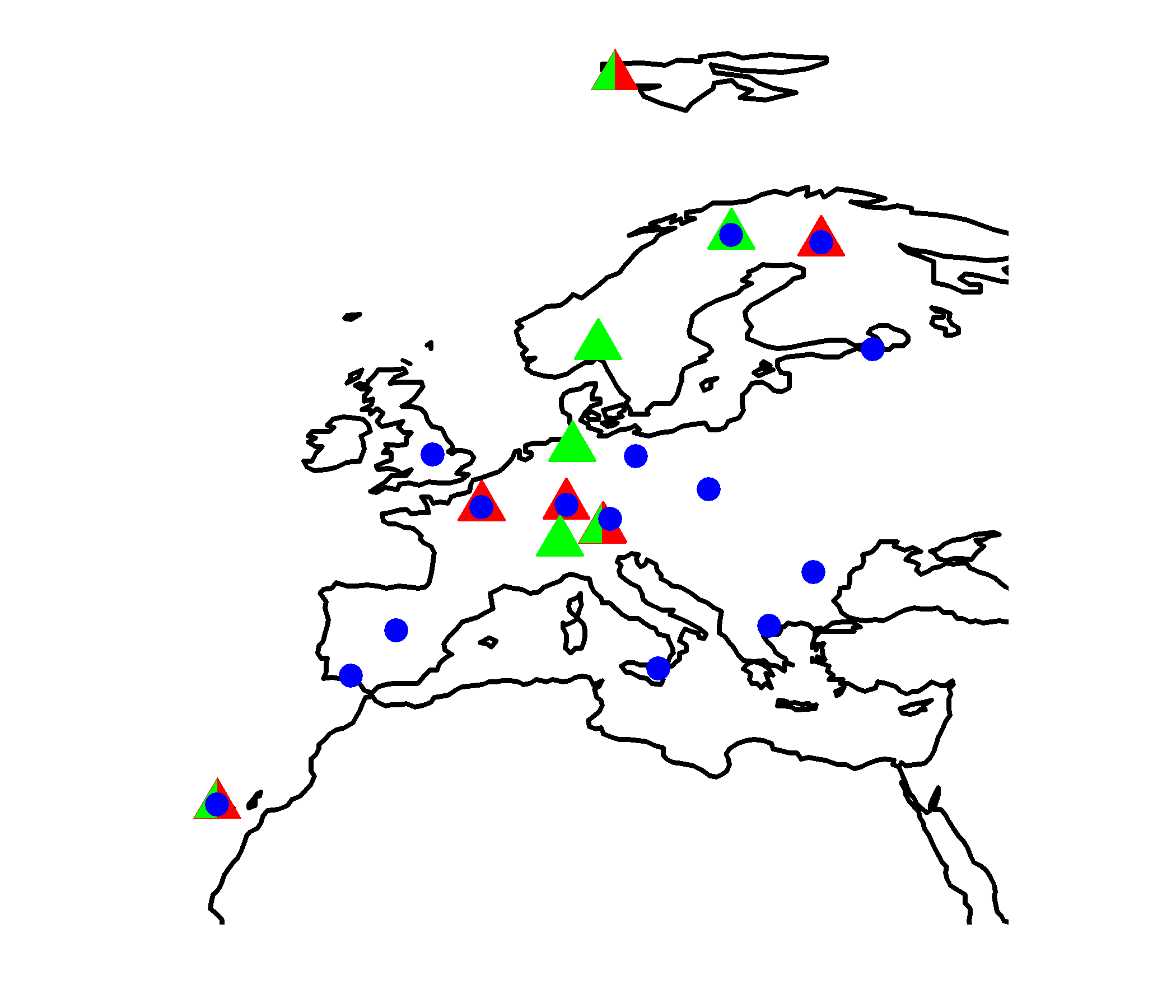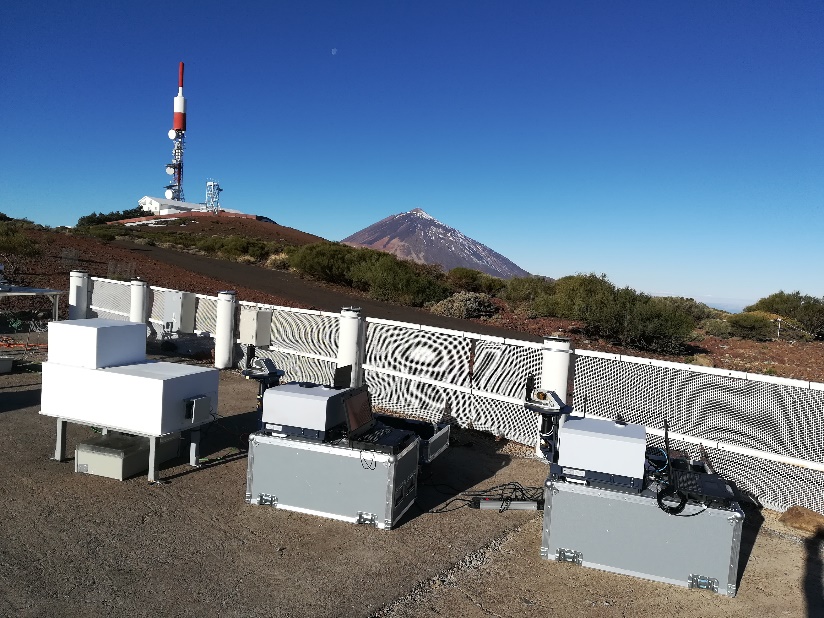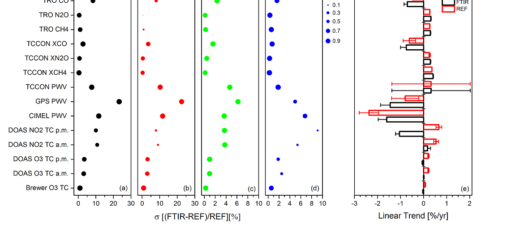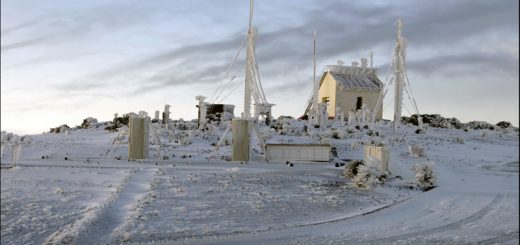Installation of a new EM27/SUN FTIR spectrometer for monitoring greenhouse gas concentrations at Izaña Atmospheric Observatory.
Click here for the Spanish version
Fourier Transform InfraRed (FTIR) spectrometry is currently the sole operational remote sensing technique providing total column amounts of key atmospheric trace gases such as greenhouse gases (GHGs) or ozone-related compounds (i.e. fluorine and chlorine species). Within FTIR spectrometry, the source radiation (typically the sun for atmospheric ground-based measurements) is modulated by an interferometer and all optical frequencies are recorded simultaneously in the measured interferogram. Then, a mathematical Fourier transform is used to retrieve the atmospheric absorption spectrum from the interferogram. By analysing the pressure broadening effect on the measured solar infrared absorption spectra through inversion schemes, the FTIR technique can provide atmospheric concentrations of many different gases simultaneously and with a high degree of precision.
Nowadays, high-resolution FTIR spectrometers mainly operate at a global scale in the framework of two international networks for atmospheric composition monitoring: NDACC (Network for the Detection of Atmospheric Composition Change, www2.acom.ucar.edu/irwg) and TCCON (Total Carbon Column Observing Network, https://tccon-wiki.caltech.edu/). Whilst NDACC mainly aims to establish long-term databases for detecting changes and trends in atmospheric composition and to understand their impacts on the Earth’s atmosphere, TCCON focuses on GHG research, improving our understanding of the carbon cycle and source-sink attribution. Recently, high-resolution FTIR observations have been extended by COCCON (COllaborative Carbon Column Observing Network, www.imk-asf.kit.edu/english/COCCON.php ), a research infrastructure of portable, compact, and low-resolution FTIR spectrometers (EM27/SUN) (Figure 1). In this sense, COCCON instruments are a useful complement to the existing TCCON network in remote areas, but also for the quantification of local GHG sinks/sources and flux emissions in other environments.
 Figure 1: Location of the European NDACC stations (green triangles), TCCON stations (red triangles), combined NDACC/TCCON stations (green/red triangles), and COCCON stations (permanent stations and field campaigns in blue dots). Figure adopted from Matthews et al., (2020).
Figure 1: Location of the European NDACC stations (green triangles), TCCON stations (red triangles), combined NDACC/TCCON stations (green/red triangles), and COCCON stations (permanent stations and field campaigns in blue dots). Figure adopted from Matthews et al., (2020).
In the framework of COCCON, a new EM27/SUN spectrometer has recently installed at Izaña Atmospheric Observatory (OAI) for monitoring total column amounts of carbon dioxide (CO2), methane (CH4), carbon monoxide (CO), and water vapour (H2O) (Figure 2). The new instrument will complement another EM27/SUN installed at IZO in 2018. Operating two EM27/SUN FTIR instruments will allow OAI to address different research initiatives, such as the quantification of the concentrations of the aforementioned trace gases at different altitude levels on the island of Tenerife, as well as to carry out field campaigns for the GHG monitoring at other interesting locations in Spain (e.g. close to punctual GHG sources). These data will be crucial for validation activities of the current and future satellite missions, such as the space segment of Copernicus (Copernicus Sentinels CO2 monitoring constellation).
 Figure 2: Side-by-side measurements of the two EM27/SUN FTIR spectrometers (SN085 and SN143) at Izaña Observatory on 3rd March 2018.
Figure 2: Side-by-side measurements of the two EM27/SUN FTIR spectrometers (SN085 and SN143) at Izaña Observatory on 3rd March 2018.
References:
Matthews, B., O. E. García, E. Cuevas, W. Spangl, and P. Castro: Report on how EIONET and EEA can contribute to the urban in situ requirements of a future Copernicus anthropogenic CO2 observing system, European Environment Agency (EEA) – Negotiated procedure No EEA/IDM/R0/17/008, 2020.



